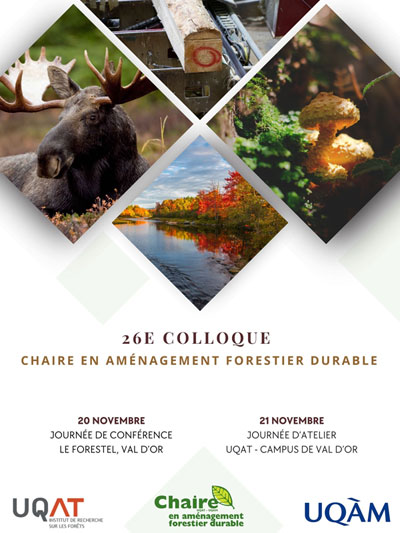Angana Kuri
Doctorat
Gradient-Based Assessment of Ecosystem Resilience: Evaluating Vegetation, Soil Microbiome Diversity and Carbon Pools of Outcrops in Proximity to the Horne Smelter of Rouyn-Noranda.
Université du Québec en Abitibi-Témiscamingue
Directeur: Nicole Fenton
Codirecteur: Mebarek Lamara, Xavier Cavard
Project proposal
Over decades, the landscape in the Rouyn-Noranda region (Quebec, Canada) has undergone significant degradation, spanning extensive areas. This degradation can be primarily attributed to the emission of sulphur dioxide gas and pollutants from the Horne Smelter. Studies around other smelters indicate that the direct release of sulphur dioxide gas into the atmosphere and the subsequent acid rain and soil acidification leads to soil loss and reduced biodiversity in the surrounding ecosystems. Despite the probability that these impacts also exist around the Horne smelter, there is limited research on how emissions affect the diversity of the vegetation and the soil microbiome, along with carbon dynamics. This study will specifically focus on rock outcrops and aims to address this gap by examining the present condition of the vegetation (tree, herb, shrub, and bryophyte) and the soil microbial (fungi and bacteria) abundance, richness, and composition, along with the carbon content in both vegetation and soil. We will determine if these aspects change with distance from the smelter, in different cardinal directions, and under various soil physicochemical properties. DNA metabarcoding sequencing will be used to examine the soil fungal and bacterial diversity. Different aspects of their relationships with plants and soil physicochemical properties will be determined. We will evaluate carbon content in various pools (above-below ground and organic soil) concerning the changes along distances, cardinal directions, and soil physicochemical properties. We will use mixed models to evaluate how distance from the smelter, cardinal directions, and soil physicochemical properties influence the abundance and richness of vegetation and soil microbiome, along with carbon pools. Ordination techniques will be utilized to visualize the significant effects on the composition of plant species and soil microbial communities. The comprehensive findings from this study will provide insights for future restoration and enhance environmental resilience in areas proximal to industrial activities.










